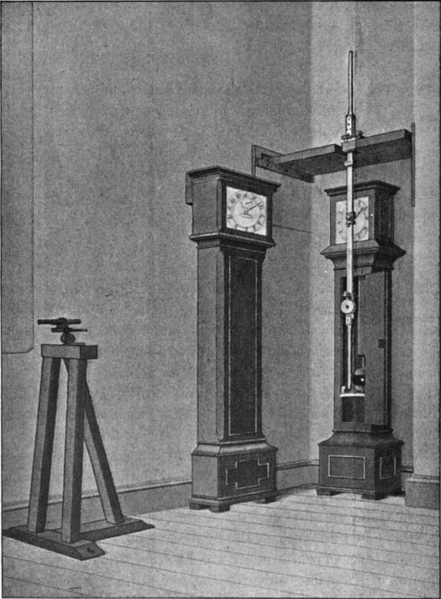Bestand:Kater pendulum use.png

Grootte van deze voorvertoning: 441 × 599 pixels. Andere resoluties: 176 × 240 pixels | 353 × 480 pixels | 696 × 946 pixels.
Oorspronkelijk bestand (696 × 946 pixels, bestandsgrootte: 341 kB, MIME-type: image/png)
Bestandsgeschiedenis
Klik op een datum/tijd om het bestand te zien zoals het destijds was.
| Datum/tijd | Miniatuur | Afmetingen | Gebruiker | Opmerking | |
|---|---|---|---|---|---|
| huidige versie | 12 dec 2012 21:01 |  | 696 × 946 (341 kB) | Quibik | Removed thin vertical stripes. |
| 30 jan 2009 15:21 |  | 696 × 946 (247 kB) | Chetvorno | == Summary == {{Information |Description={{en|Drawing of the use of a Kater's pendulum, a reversable pendulum invented in 1818 by British captain Henry Kater as a gravimeter instrument to measure the local acceleration of gr | |
| 25 jan 2009 06:38 |  | 793 × 746 (84 kB) | Chetvorno | {{Information |Description=Drawing of the use of a Wikipedia:Kater's pendulum, a reversable pendulum invented as a gravimeter instrument to measure the local acceleration of gravity. |Source=Downloaded 2009-01-20 from [http://books.google.com/boo |
Bestandsgebruik
Dit bestand wordt op de volgende pagina gebruikt:
Globaal bestandsgebruik
De volgende andere wiki's gebruiken dit bestand:
- Gebruikt op ar.wikipedia.org
- Gebruikt op ca.wikipedia.org
- Gebruikt op en.wikipedia.org
- Gebruikt op es.wikipedia.org
- Gebruikt op fa.wikipedia.org
- Gebruikt op fr.wikipedia.org
- Gebruikt op it.wikipedia.org
- Gebruikt op ja.wikipedia.org
- Gebruikt op pl.wikipedia.org
- Gebruikt op pt.wikipedia.org
- Gebruikt op th.wikipedia.org
- Gebruikt op vi.wikipedia.org
